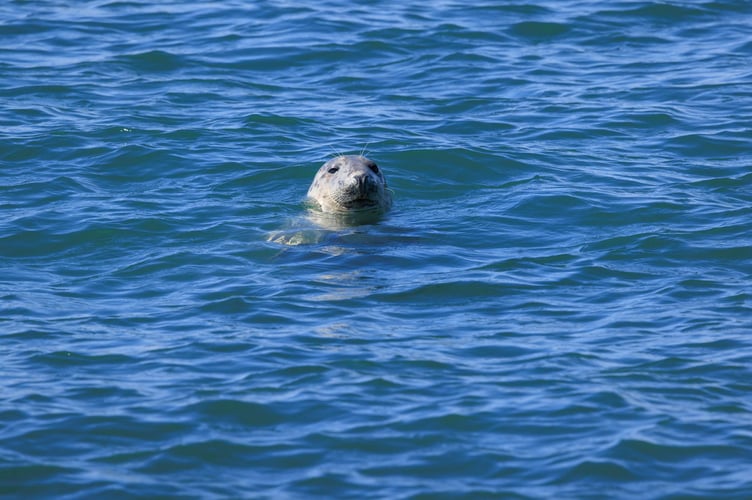If you’re looking for ways to entertain the whole family this half-term while enjoying the great outdoors of Wales — look no further.
The Wales Coast Path is sharing seven activities that families can enjoy on the Welsh coast this winter — and the best part? They’re all completely free.
From seal and dolphin spotting to exploring hundreds of years of history at Wales’ coastal castles — get ready to keep the children occupied all while exploring 870 miles of picturesque Welsh coastline, from Flint all the way down to Chepstow.
1. Cycle your way along the Wales Coast Path
Did you know that several sections of the Wales Coast Path are included on the National Cycle Network? Whether your little one is learning how to ride a bike for the first time or fancies themselves as a young Geraint Thomas or Elinor Barker — there are lots of flat, traffic free routes that allow you to make the most of Wales’ coastal scenery.
Why not explore the 28 miles of Wales Coast Path which link the major resorts of Prestatyn, Rhyl, Colwyn Bay, Llandudno and Conwy? There are lots of opportunities to stop and enjoy the beautiful views of the northern slopes of Snowdonia National Park or walk along the ancient stones of Conwy Town Walls.

2. Walk in the footsteps of Welsh history
Wales is filled to the brim with coastal fortresses, abbeys and historic homes… And plenty of them are completely free to explore.
In west Wales, we have the beautiful Castle of Llansteffan — perhaps best known for its massive twin-towered gatehouse, built in the late 1200s. It’s quite the sight to see — but it also doubles up as an excellent spot for an invisible sword fight!
Meanwhile, on the banks of the Dee estuary sits Flint Castle — a 13th century ruin with a unique design, featuring exceptionally thick walls; its own moat; and a solitary round tower that stands apart from the rest of the castle. Overlooking what was once one of the busiest waterways in the world, today it is one of Europe’s most important homes for wading birds and wildfowl. With its miles of breathtaking views, it’s sure to stop the whole family in their tracks.
Discover more of Wales’ castles on the coastline through our collection of historical walking itineraries — created in partnership with Cadw.
3. Spot seals, puffins, dolphins and more — all on Welsh waters
We can guarantee that whichever part of the Path you explore, there will always be some kind of Welsh wildlife to discover.
Whether it’s the sound of the 90,000 wading birds and wildfowl flocking to the Severn Estuary or grey seals and dolphins majestically moving through the water offshore of Anglesey, wildlife spotting is a great way to learn more about Wales’ resident fauna and flora.
You could even turn wildlife spotting into a contest — after all, there’s nothing like a spot of competition to keep the family entertained!

4. Play a role in vital environmental research through CoastSnap
Taking part in a global citizen science initiative would be a pretty epic thing to do during Half Term, right? Well, along the Wales Coast Path, you can do just that — with a little help from our CoastSnap phone cradles.
All you need to do is use the cradles to take photographs of the beaches or cliff tops on your walk — before uploading it to the Wales Coastal Monitoring Centre website to help us research into the effects of climate change on the Welsh coastline.
The coastline changes all the time from day to day and from season to season, but we don’t always notice it. By capturing pictures from the Path, you’ll be helping us to protect the Wales Coast Path for years to come.
5. Become a waste warrior and keep our coast clean
Another way we can protect our coastline is by coming together to remove waste — which can leave our wildlife at risk. Whether it’s a big beach clean or a general path pick-up, it’s important to stay safe and follow guidelines such as:
· Use gloves and a bin bag to take litter home with you.
· If anything looks dangerous or sharp, don’t pick it up — just report it to the local council or landowner.
· Go one step further by recycling as much of the rubbish as you can.
· Always wash your hands after litter picking!
6. Normalise picnics in winter
We’ve got a bold statement for you… Picnics aren’t just for spring and summer!
Why not pack your thermos, some warm layers, and a blanket — and enjoy a family feast on the Wales Coast Path. The children can play in the open spaces whilst you get to enjoy the scenic views. And if that doesn’t tire them out then there are plenty of nearby cultural sites that are worth a visit. From the historic 126-year-old Colwyn Bay Theatre to the National Waterfront Museum in Swansea, there is so much to explore along the Wales Coast Path.
7. Become a marine biologist for the day
Or in other words — search for sea creatures in Welsh rockpools! From colourful starfish to curious crabs, you’ll be surprised at the amount of wildlife that lies hidden along our rocky shores. You can discover some of the best places to go rock-pooling via The Wildlife Trust.
What you’ll need: a clear bucket or tupperware container to dip into the water and study your specimens — just don’t forget to put them back gently into the rockpool afterwards. Remember to always check tide times and wear sturdy footwear.
For more information and to plan your next half term adventure, visit the Wales Coast Path website or follow @WalesCoastPath on Facebook, X and Instagram.
About Wales Coast Path:
· The Wales Coast Path is a continuous 870-mile, long distance walking trail around the Welsh coastline.
· During 2022, the Wales Coast Path celebrated 10 years since its official launch in May 2012.
· The Wales Coast Path links with Offa’s Dyke Path National Trail (which follows the border between England and Wales) and Glyndwr’s Way (an inland route which meets up with the Offa’s Dyke Path).
.jpeg?width=209&height=140&crop=209:145,smart&quality=75)



Comments
This article has no comments yet. Be the first to leave a comment.